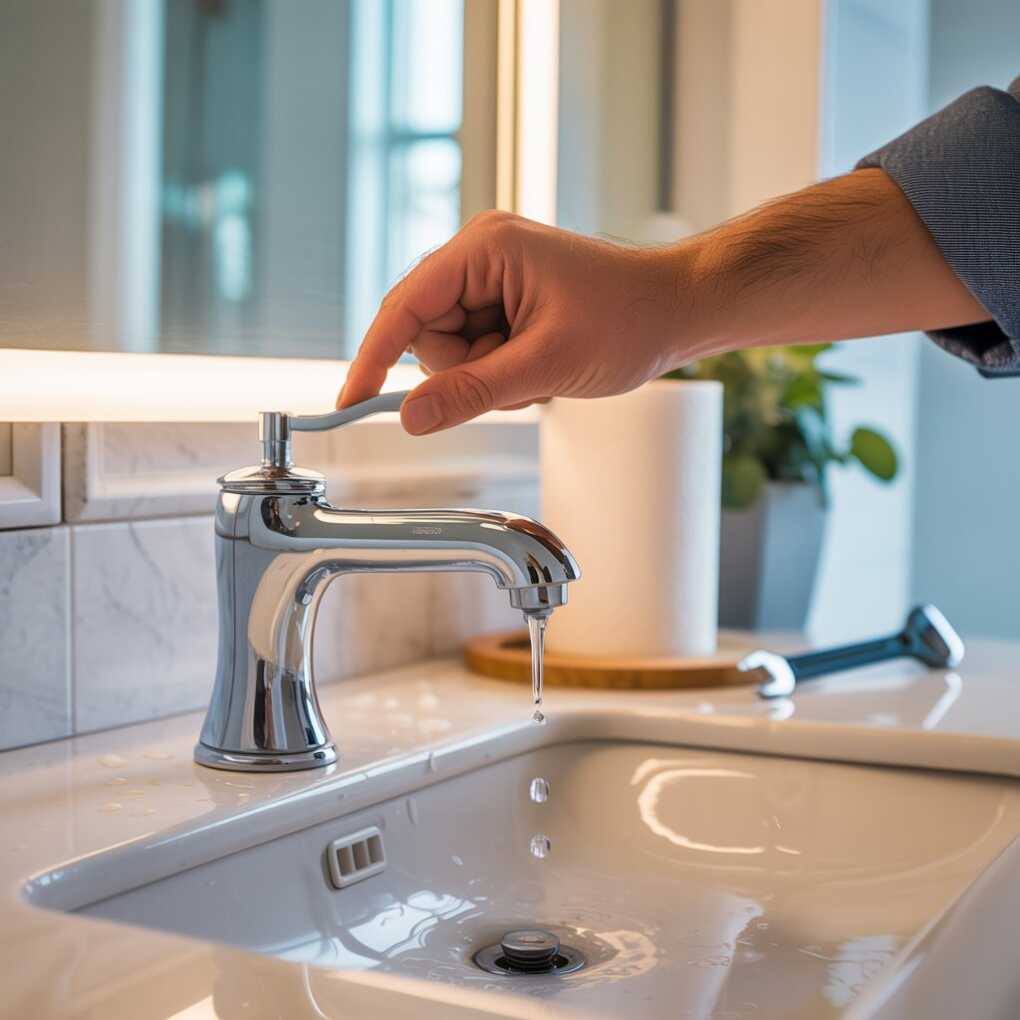A water leak in the home may seem minor at first glance, but even a small trickle can lead to significant damage if not addressed promptly. Drywall can become compromised, wooden framing may warp, and mold growth can become a serious health hazard. Knowing how to stop a water leak can protect not only your property but also your peace of mind. The key is not to panic but to understand the situation and take fast, informed action.
Leaks don’t wait for a convenient time to appear. Whether you’re dealing with a burst pipe under the sink or a damp patch on your ceiling during a storm, quick thinking is essential. While some leaks may require professional intervention, many common scenarios can be managed effectively with basic tools and a bit of know-how. Learning how to stop a water leak is not only practical but often cost-saving in the long run.

Finding the Source of the Leak
Before you can do anything, you need to know exactly where the water is coming from. In many cases, the visible damage does not reflect the actual source of the problem. Water can travel along beams, pipes, or even electrical wiring, showing up in places far from where it started.
Start by looking for telltale signs—damp spots on ceilings, dripping sounds behind walls, or puddles beneath appliances. In kitchens and bathrooms, check under sinks and behind toilets, where plumbing lines are most accessible. If you suspect a leak but can’t see it, turn off all water in the house and check your water meter. If the meter continues to move, you likely have a hidden leak. Knowing how to stop a water leak becomes easier once the origin is correctly identified.
Shutting Off the Water Supply
Once you locate the source, the next step is to minimize the damage by cutting off the water supply. Most homes have a main shut-off valve, often located where the water line enters the house—commonly in basements, utility closets, or near outdoor walls. Familiarizing yourself with this valve before an emergency arises can save you critical time when a leak happens.
If the issue is isolated to a particular fixture, such as a toilet or a faucet, look for the local shut-off valve near the unit. These smaller valves can be turned clockwise to stop water flow to a specific part of the house. Knowing how to stop a water leak quickly often hinges on your ability to shut off the source immediately and effectively.
Managing Pipe Leaks and Temporary Repairs
Leaks in water supply lines or drainage pipes are among the most common household problems. Once the water is off and the area is dry, you can apply temporary solutions that prevent further water loss until a permanent repair can be made.
Pipe clamps, rubber patches, or epoxy compounds are widely available and easy to use. Wrap the leaking area securely, following the product instructions. For small pinhole leaks, even tightly wrapped duct tape can serve as a temporary stopgap. These solutions are not permanent, but they’re part of understanding how to stop a water leak in a pinch, buying you time to schedule proper repairs.
Dealing with Faucet and Valve Leaks
Faucets are high-use fixtures that often develop leaks due to worn washers or seals. If a faucet is dripping, you can usually stop the leak by disassembling the unit and replacing the faulty components. Be sure to turn off the water supply to the faucet before you begin, and use the correct tools to avoid damaging fittings.
Valve leaks, especially those connected to dishwashers or washing machines, may stem from loose connections or degraded O-rings. Tightening the fittings gently or replacing worn rubber components can make a big difference. Learning how to stop a water leak here involves basic plumbing knowledge and the confidence to disassemble and reassemble small parts correctly.
Addressing Toilet Tank Leaks
Toilets can waste gallons of water per day when leaking. One common source is the flapper valve inside the tank, which can become warped over time. Replacing the flapper or adjusting the chain length is a quick fix that most homeowners can manage with minimal tools.
Check the fill valve and water supply line as well. Sometimes, the leak is external, where the hose connects to the tank. Tighten any loose connections and replace washers if needed. By learning how to stop a water leak at the toilet, you can prevent costly water bills and avoid damage to nearby flooring.
Stopping Leaks in Appliances
Dishwashers, washing machines, and refrigerators with water dispensers or ice makers are common sources of household leaks. These appliances often have hidden water lines running behind or beneath them, making it harder to notice a problem until the surrounding area becomes saturated.
Start by checking the hoses and their connection points. Rubber hoses degrade over time, and a cracked hose can leak under pressure. Replacing them with stainless steel braided hoses offers better durability. Make sure that all connections are tight but not over-torqued, which can damage the fittings. Knowing how to stop a water leak in these appliances may involve moving them out from the wall, so ensure the appliance is powered off and handled with care.
Fixing Roof and Ceiling Leaks
Leaks from above can be especially frustrating because they tend to occur during storms and affect large areas. A water stain on the ceiling is often the first sign of a roof leak. While a permanent fix will likely require professional roofing services, you can take short-term measures to control the damage.
Go into the attic and look for signs of water intrusion. Place a bucket beneath any active drips and consider using a tarp on the roof if it’s safe to do so. If the ceiling is bulging from water accumulation, carefully puncture the lowest point to let the water drain in a controlled manner. This prevents a ceiling collapse and makes cleanup more manageable. These emergency actions fall under the skill of knowing how to stop a water leak before it causes greater structural problems.
Handling Outdoor Leaks and Irrigation Systems
Leaks aren’t limited to the inside of your home. Outdoor spigots, hoses, sprinkler systems, and even underground irrigation lines can develop issues. If you notice unusually soggy areas in your yard, it could signal a broken water line underground.
For above-ground fixtures, check washers and hose connectors, replacing them as needed. For in-ground systems, turn off the irrigation zone and inspect visible sections of the piping. Leaks often occur at joints or junction boxes. You may need to dig slightly to reach and repair these parts, using PVC glue or compression couplings as a temporary solution. Understanding how to stop a water leak in these systems helps preserve your landscape and prevents wasted utility usage.
When to Call a Professional
While many leaks can be handled with basic tools and some patience, others require the expertise of a licensed plumber. If you’ve turned off the water and the leak continues, or if you’re dealing with sewage or dirty water, it’s best to call in help. Mold remediation, ceiling replacements, and full pipe section replacements fall outside the scope of most DIY fixes.
However, knowing how to stop a water leak temporarily gives you control of the situation until help arrives. It reduces the risk of further damage and allows you to communicate the issue more clearly to professionals, like Absolute Maintenance & Consulting.
Preventing Future Water Leaks
The best way to deal with leaks is to stop them before they start. Regular inspections of pipes, faucets, valves, and appliances can go a long way. Replace rubber hoses every few years, insulate pipes in cold climates to prevent freezing, and monitor water usage for unexpected spikes that may indicate a hidden issue.
Install leak detectors in areas where water damage would be costly, such as under sinks, behind toilets, and near the washing machine. These devices alert you the moment moisture is detected. By adopting proactive habits and understanding how to stop a water leak early, you extend the lifespan of your plumbing and preserve the integrity of your home.
The Cost of Ignoring Water Leaks
Ignoring even a small water leak can lead to cascading problems. Mold growth can compromise air quality and create serious health concerns. Water damage to drywall, insulation, and flooring often results in extensive and costly renovations. Structural elements, if allowed to remain wet, can rot over time, weakening your home’s foundation.
By knowing how to stop a water leak quickly, you’re not just protecting against the immediate inconvenience but also preserving long-term property value. Insurance claims may also hinge on how promptly you addressed the issue, so taking swift action is always in your best interest.
Using Technology to Stay Ahead
In today’s connected world, smart home systems can assist in leak prevention and detection. Devices connected to your phone can monitor water pressure, detect irregular flow patterns, and shut off water automatically if a leak is detected. These tools are especially helpful for vacation homes or rentals where occupants may not notice a leak immediately.
Incorporating these technologies into your household management approach complements your understanding of how to stop a water leak before it becomes destructive. It’s a modern way to take traditional homeowner responsibility to the next level.
Final Thoughts on Taking Control
Every homeowner benefits from learning how to stop a water leak. Whether it’s a simple tightening of a valve or a swift response to a burst pipe, these actions matter. They prevent damage, save money, and empower you to take control of emergencies without panic.
It all starts with knowledge—knowing where your shut-off valves are, having the right tools on hand, and understanding the systems within your home. The more familiar you become with your plumbing layout and fixtures, the more confident you’ll be when something goes wrong.
A leak might begin with just a drip, but your response can mean the difference between a quick fix and a long-term disaster. By staying alert, prepared, and proactive, you protect your home—and that’s the real power of knowing how to stop a water leak.
